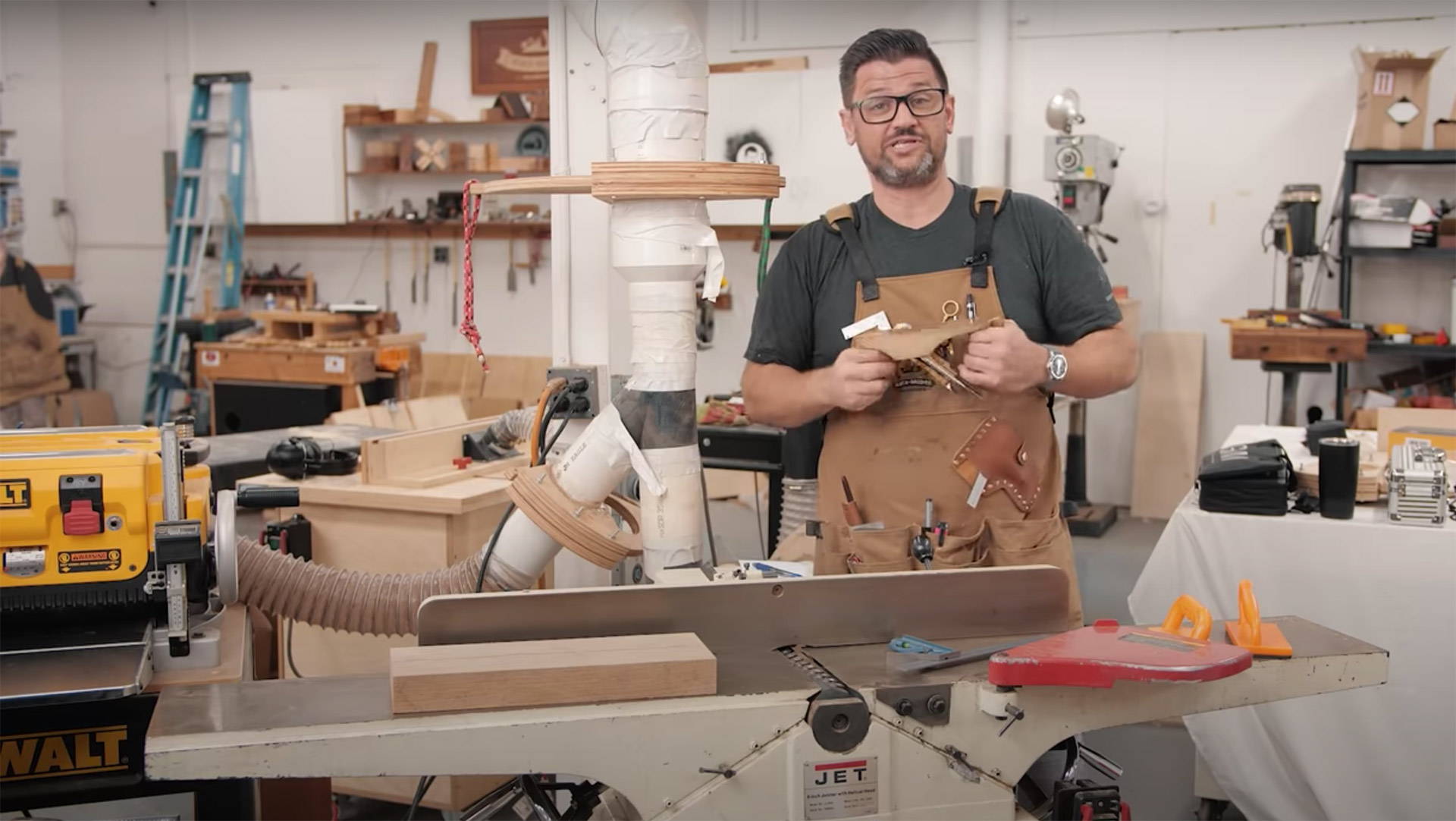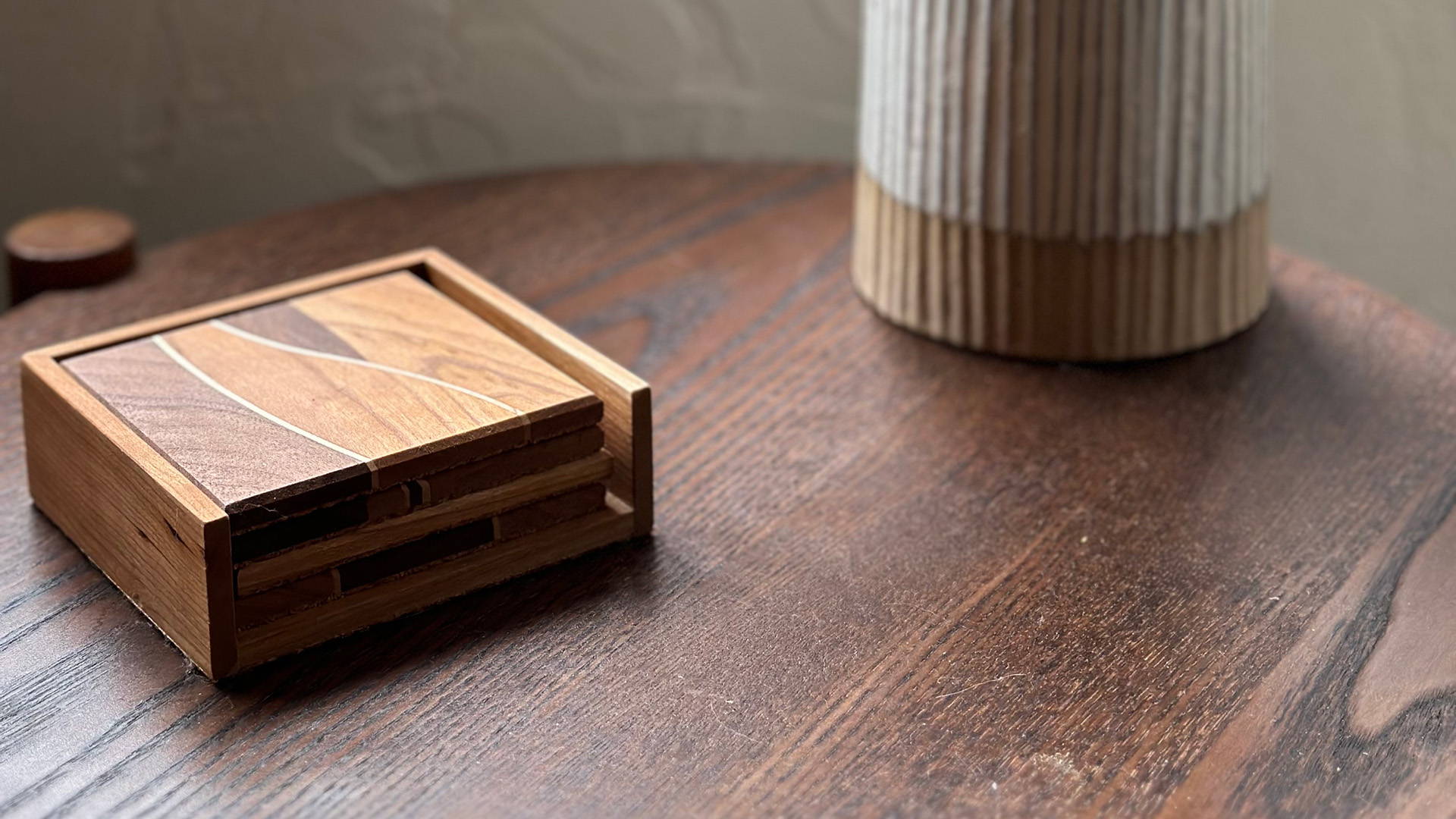Snipe: Fun to say. Not fun to deal with.
When a board goes through a planer, the rollers keep it moving through the cutterhead by exerting heavy pressure.
But when only one roller is making contact with a board, it can tilt that board up into the cutterhead.
Hence snipe on the ends of your board.
So how can you deal with snipe? Here’s a few ways:
1. MAKE SURE INFEED/OUTFEED TABLES ARE LEVEL
If the infeed and outfeed tables on your planer aren’t level with the inner table, you’re more likely to get snipe.
It’s easy to check with a straight edge. Here’s a video where I explain the process.
2. TAKE SMALL PASSES
The more material you try to take off, the more pressure the rollers put on a board.
Take small bites (1/16 inch or less) and you’ll reduce the chances of a board getting tilted into the cutterhead.
3. USE A SACRIFICIAL OFFCUT
Take an offcut that’s the same thickness of your board.
Run this offcut through the planer with your board butted against the back. When the offcut comes out, butt it against the back end of your board.
It’ll selflessly take the snipe — like a bodyguard for your workpiece.
4. PLAN TO TRIM THE ENDS
If there seems to be no way to avoid snipe on your planer, cut your boards longer than needed and trim off the excess after planing.
It’s a little wasteful in terms of material — but it will ensure your boards are perfect along their length.
(Especially if you used a dedicated crosscut blade on your miter or table saw).
Want to learn more about milling? Read this.
How do you deal with planer snipe? Let us know in the comments below!
Follow us on Instagram @katzmosestools, on TikTok @katzmoseswoodworking, and check out my YouTube channel for more great woodworking content...
And as always, STAY SAFE IN THE SHOP!











9 comments
Jim Blackburn
I built a sled that is a little longer than the boards that I will be running through the planer. I attach my board to it with double sided tape. This works very well for me.
I built a sled that is a little longer than the boards that I will be running through the planer. I attach my board to it with double sided tape. This works very well for me.
Frank
I found that lifting the board slightly as it engages rollers then starts cutting mostly eliminates snipe at infeed side then going around to outfeed and lifting slightly as the cutting head finishes -
I found that lifting the board slightly as it engages rollers then starts cutting mostly eliminates snipe at infeed side then going around to outfeed and lifting slightly as the cutting head finishes -
BigB
The simplest way is to run a parallel board for sacrifice.
But when milling a lot of stock, this can be not so practical. The method I like is to lift up the stock when feeding it in and at the end when it exits. The upward pressure ensures the stock stays flat to the table and virtually eliminates snipe.
The simplest way is to run a parallel board for sacrifice.
But when milling a lot of stock, this can be not so practical. The method I like is to lift up the stock when feeding it in and at the end when it exits. The upward pressure ensures the stock stays flat to the table and virtually eliminates snipe.
Bob Benzuly
Would giving the board a little up-pressure when it enters the planer as well as when the board is about to fully exit, help minimize snipe?
Would giving the board a little up-pressure when it enters the planer as well as when the board is about to fully exit, help minimize snipe?
Ken
Great advice!! That has always been an issue for me. I have similar problems when I’m trying to run a board across my jointer. Ugh!!
Great advice!! That has always been an issue for me. I have similar problems when I’m trying to run a board across my jointer. Ugh!!
Anonymous
I’ve tried many ways to control snipe in my planer (not a De 735). The force of rollers within the machine contributes to snipe as the board feeds through. The best way I’ve come across to eliminate roller force causing snipe, is to run a parallel piece of roughly the same thickness material alongside, but far enough back so the main piece exits the machine before the support piece. This keeps the outfeed rollers from pressuring the end of the main stock down unsupported by the infeed rollers, which ultimately would force the trailing end of the board up into the cutter head.
I’ve tried many ways to control snipe in my planer (not a De 735). The force of rollers within the machine contributes to snipe as the board feeds through. The best way I’ve come across to eliminate roller force causing snipe, is to run a parallel piece of roughly the same thickness material alongside, but far enough back so the main piece exits the machine before the support piece. This keeps the outfeed rollers from pressuring the end of the main stock down unsupported by the infeed rollers, which ultimately would force the trailing end of the board up into the cutter head.
Moe Kahn
“Cutting off the ends” to accommodate a DeWalt 735 means you’ll be losing about 8" of material total – completely unacceptable with expensive stock, but especially if you need long lengths for a project. The only way I’ve found to really eliminate snipe with that particular (totally over-rated) machine is to use a sled or a through-platform (chunk of melamine, waxed and slippery)that supports the work throughout its journey. The flimsy stamped tables of the 735 don’t cut it at all – you might better hang them on your shop wall for use as shelves. BTW – the much cheaper DeWalt 734 breadbox planer was a lot less “snipey” for me than the 735. Not in love with that machine at all.
“Cutting off the ends” to accommodate a DeWalt 735 means you’ll be losing about 8" of material total – completely unacceptable with expensive stock, but especially if you need long lengths for a project. The only way I’ve found to really eliminate snipe with that particular (totally over-rated) machine is to use a sled or a through-platform (chunk of melamine, waxed and slippery)that supports the work throughout its journey. The flimsy stamped tables of the 735 don’t cut it at all – you might better hang them on your shop wall for use as shelves. BTW – the much cheaper DeWalt 734 breadbox planer was a lot less “snipey” for me than the 735. Not in love with that machine at all.
kevin winsor
The cutter head engages the wood before the piece gets held down by the outfeed roller. The action of the cutter head lifts the unsupported end of the board until it get held down by the second. Thinner boards get lifted more than thicker boards. Snipe on thin boards can be reduced by feeding the board on an angle so that a corner lifts the rollers.
The cutter head engages the wood before the piece gets held down by the outfeed roller. The action of the cutter head lifts the unsupported end of the board until it get held down by the second. Thinner boards get lifted more than thicker boards. Snipe on thin boards can be reduced by feeding the board on an angle so that a corner lifts the rollers.
Giovanny Medina
Great article Katz! Is there a specific CMT recommendation for Miter Saws as well as Melamine sheets? Thanks.
Great article Katz! Is there a specific CMT recommendation for Miter Saws as well as Melamine sheets? Thanks.